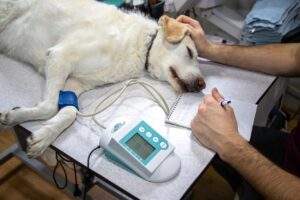Capabilities of The Different Types of Mini C-Arm
A C-arm is an imaging device used during delicate orthopedic surgeries in hospitals and clinics. These machines have flat panel detectors that produce instant results and require less radiation exposure for the patient and the operator. This article comprehensively analyzes the global mini C-arm market, including major growth drivers, restraining factors and opportunities. It also provides insights into regional developments such as mergers and acquisitions.
Mini C-Arm
The mini C-arm enables clinicians to take dynamic images of the extremities and perform manipulations or injections during outpatient hand surgery. It reduces the need for formal X-rays, which saves patients time and money on trips between hospital departments. The system has a digital flat-panel detector, which produces instant results and minimizes radiation exposure. It also has a low-power generator that generates less radiation, which is important for patient safety and protecting the operator’s staff from unnecessary exposure to harmful X-rays. Look at the C-arm’s positioning capabilities, including its horizontal, vertical and swivel movements. You want to be certain it can image hard-to-reach areas of the body in your procedures. Find out if it has integrated cooling systems, which prevent the equipment from overheating during prolonged, strenuous tasks. You will also want to check that the unit can send images over your network to PACS and that it integrates well with your existing infrastructure. In addition, make sure that the C-arm offers sufficient storage space for storing all of your images. You can find different types of c-arm on sites like minicarm.com.
Mobile C-Arm
Some manufacturers have designed mobile C-arms with advanced features. Some C-arms feature a 9-inch image intensifier, which increases the field of view (FOV) while reducing radiation exposure. Other innovations include a touch-screen interface, laser aiming guides and procedure road mapping, which allows you to plan and execute endovascular procedures with fewer contrast media injections and shorter fluoroscopy times. Another important feature is the ability to rotate the unit horizontally and axially. It enables clinicians to get detailed views of hard-to-reach areas. Also, look for models that have a cooling capacity. It can be extremely beneficial during long, demanding procedures.
Full-Size C-Arm
A full-size C-arm is the workhorse of an imaging department. It requires a large room to hold the unit and the monitor cart, plus enough power for both. With a larger arc and generator capacity, it can penetrate thicker body parts and can work with many different surgical techniques. Compared to older systems, its flat detector directly translates more X-ray signals to the image, reducing the time needed to generate an image. This system reduces unnecessary radiation exposure to staff and patients while improving diagnostic accuracy. Ask about a system’s lateral, vertical, and orbital movements and the angulation and swivel capabilities. These details will be crucial for the clinicians using the system, and you’ll want to ensure they can easily maneuver the equipment in all positions. In addition, consider how you will network and integrate the system with your PACS.
Portable C-Arm
Physicians use the portable C-arm for various procedures, and can be transported between locations. It features an all-in-one design with the monitor, generator, console, tube and detector all in one unit. It makes it easy to set up and get started with your procedure without waiting for an onsite tech. The C-arm can also produce real-time results on a flat panel detector, reducing the wait time for results and providing better imaging. Additionally, the C-arm can use iris collimation to limit the field of view for lower radiation exposure. When choosing a portable C-arm, look for a system with an ergonomic design. You want it easy for everyone on your team, from surgeons to nurses and techs. Ask for a trial to see how intuitive it is and how many button pushes are required to do various functions. A good ergonomic design will help reduce surgical time.







